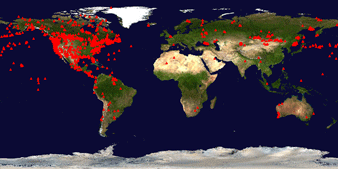All Birds Barcoding Initiative (ABBI) flight update
Bird barcodes fly in. So far, researchers have deposited 3308 avian COI barcodes from about 800 species, which represents 8% of world birds, to the Barcode of Life Database (BOLD) www.barcodinglife.org. Sequences from outside North America are flocking in, including a recent set from western Australian parrots, contributed by Peter Spencer, Murdoch University. Quoting P. Spencer “these species are generally high profile, expensive (some >AUD50K) and charismatic (aka people like to steal and display them!).” The barcode database may assist with wildlife forensics in preventing illegal taking and export.

ABBI on tour, internationally. A 2 day meeting “Museum Collections and the Barcoding of Life” will be held at the Oslo Natural History Museum on March 20-21, 2006, and is heavily oversubscribed! ABBI-related presentations include talks by Per Ericson, Swedish Museum of Natural History; Jon Fjeldsa, Zoological Museum, Copenhagen; Arild Johnsen, Oslo Natural History Museum; and myself.
On April 7-8, 2006, a Consortium for the Barcode of Life (CBOL) meeting will be held in Capetown, South Africa. David Schindel, Executive Secretary of CBOL, will present a summary of ABBI progress and plans.
A workshop on “DNA barcoding of Palearctic bird species at Naturalis” will be held at National Museum of Natural History, Leiden, on 20-21 April 2006, organized by Per Ericson, Swedish Museum of Natural History. There may be additional space; if interested, please contact Per Ericson Per.Ericson@nrm.se
Where is that barcoder? An excellent site with remarkable photos of pelagic birds www.oceanwanderers.com/, sometimes features ID puzzles, such as this unidentified petrel that landed on a cruise ship coming into Hawaii. Despite being held and photographed, its identify remains uncertain. A single breast feather collected before releasing and we might know the answer!
This entry was posted on Wednesday, March 15th, 2006 at 8:38 pm and is filed under AllBirds, General. You can follow any responses to this entry through the RSS 2.0 feed. Both comments and pings are currently closed.